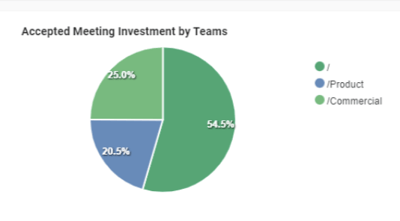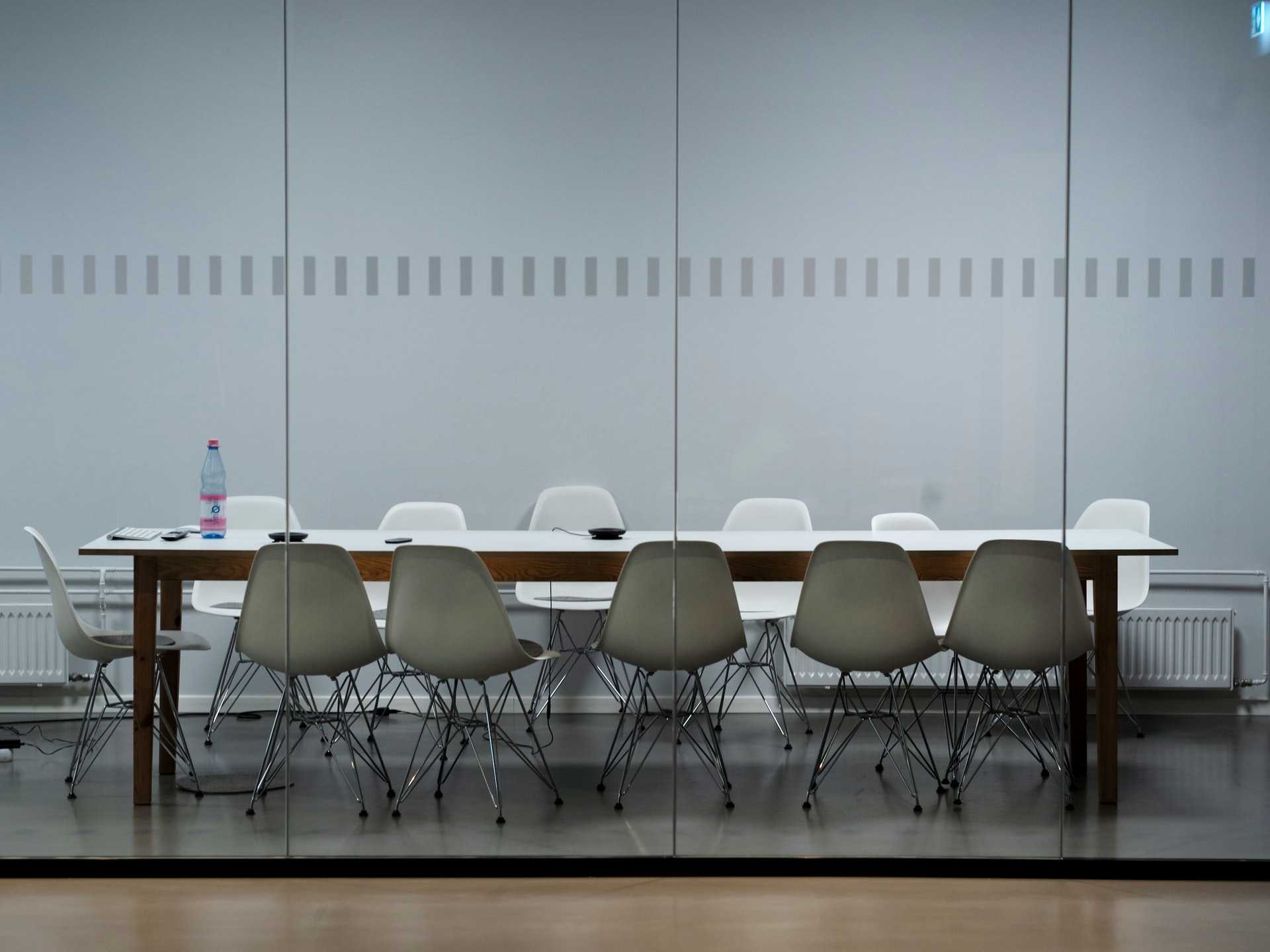Meeting Follow-up best practices
Use meeting follow-up best practic guide to improve team communication, increase efficiency, and foster a positive meeting culture in your company.
Meeting preparation checklist will help you plan your meetings effectively and get the most out of every attendee to promote positive company culture.
Meetings are an important part of any organization, yet they can be frustrating, unproductive, and cause attendees to become disengaged if not planned properly. Arguably, meeting planning is the most important stage of any company meeting cycle, if this is done poorly, the meeting itself and overall culture will suffer. We have put together a meeting preparation checklist to help you plan your meetings effectively.
Whether you are running virtual meetings on Zoom, in-person, or over the phone, there are important aspects that need to be considered in order to plan a meeting successfully, these include:
By taking the time to ensure you cover all of these aspects and fostering them as an ongoing process, you can optimize your meeting for success. Let's take a look in a bit more in-depth at these stages.
The first step is to determine the purpose of the meeting. What needs to be accomplished? This can be done by asking yourself and other attendees what the goal of the meeting is. Once you have determined the purpose, you can begin to put together a plan to achieve that goal.
One of the key things you can do here is to create a meeting purpose statement. This is a short statement that outlines why the meeting is being held, what type of meeting it is, and what the goal is. This gives a background on the whole meeting and can help to shape the agenda and other points of the pre-planning stages.
Some examples of meeting purpose statements are as follows:
“This is a brainstorming session to come up with ideas for our new marketing campaign.”
“The goal of this meeting is to discuss the progress of the project and to assign tasks for the next phase.”
“We will be having a strategy meeting to review our current progress and set objectives for the upcoming quarter.”
As you can see, these statements are short, but they give a clear idea of the meeting's purpose. This helps everyone to be on the same page from the start and understand what needs to be done in order to make the meeting successful.
The next step is to determine who should attend your meeting. This can be done by considering the purpose of the meeting and who needs to be involved in order to achieve the goals you have set.
Some factors to consider when deciding who should attend your meeting include:
By taking the time to consider who should attend your meeting, you can ensure that only those who need to be there are in attendance. This will help to keep the discussion on track and focused. Be sure that you don’t invite employees because of their FOMO (fear of missing out)!

The next step is to decide on a location for your meeting. This should be done based on the number of attendees, the purpose of the meeting, and the type of meeting you are planning. For example, if you hold a meeting in a large auditorium for 10 attendees, they are likely to become disengaged and feel distant from the speaker.
Some factors to consider when choosing a meeting location include:
The room should be large enough to accommodate all attendees comfortably. The space should be large enough so everyone can be heard and see any visual demonstrations. There should also be handouts and any meeting materials distributed and readily available before the start of the meeting.
The room should be set up in a way that is conducive to the type of meeting you are having. For example, a training session will require a different layout than a brainstorming session. Think about whether or not attendees will need to team up, face a screen, and how the dynamic of that room can affect productivity and engagement.
The room should have all the necessary amenities to make the meeting successful. This includes things like projectors, whiteboards, and audio/visual equipment. Consider having backups - if your meeting is based on a presentation and the equipment fails, the whole meeting could be a disaster.
The meeting location should be convenient for all attendees. This includes things like parking, public transportation, and accessibility. Consider holding a virtual meeting to avoid most location and geographical limitations in most cases.
The cost of the meeting room should be considered when making your decision. This should comply with company budgets and not occur unnecessary costs. For example, spending £5,000 to hold a training day in a small conference room in a new location compared to utilizing existing space for free in the company building.
With meetings on Zoom and video dial-in meetings, attendees should be required to attend the meeting in an office location or an office space to avoid disruptions to the meeting flow. Consider if this meeting is a video meeting or a call and make sure that this is reflected in the preparation if you require a visual presence or not to avoid surprises during the meeting.
By taking the time to consider all of these factors, you can choose a meeting location that will be ideal for the company and the attendees.
The next step on this meeting preparation checklist is to determine how long your meeting should be. This will depend on the purpose of the meeting, the number of attendees, and the type of meeting you are having. There are some essential metrics, based on external data that should be considered here:
| Length of Meeting | % of People Paying Attention |
| 0-15 minutes | 91% |
| 15-30 minutes | 84% |
| 30-45 minutes | 73% |
| 45+ minutes | 54% |
Some factors to consider when deciding on the length of your meeting include:
By taking all of these factors into consideration, you can determine how long your meeting should be. This will help to ensure that the meeting is productive and efficient. You should also consider planning your meeting in increments of 15 minutes, and if a meeting extends past an hour, consider a 15-minute break to refresh and re-engage attendees.
The format of the meeting will be determined by the purpose of the meeting, the number of attendees, and the type of meeting you are having. Each one will be structured in a different way and affects everything from the time needed to the way the room is set up.
Some common meeting types include:
The format of the meeting type will ultimately decide how attendees can engage, how the goal is achieved, and how the entire meeting is structured.

Generally, the last stage of the pre-meeting planning process is time to start planning your agenda. The agenda is one of the most important aspects of the meeting, as it will determine the flow and structure of the discussion.
"Agenda Tip - If possible, plan the most important aspects of your meeting in the first 15 minutes when the attendees are at their highest engagement levels."
When creating your agenda, there are a few things you should keep in mind:
By keeping these things in mind, you can create an agenda that will help you achieve your goals for the meeting.
The final step is to determine what to include in your meeting agenda. This will vary depending on the purpose of the meeting, but there are some general items that should be included in all agendas.
Some of the things you should consider adding to your agenda include:
By including these items in your agenda, you can ensure that your meeting is productive and successful. There may be deviations in your agenda depending on time, disruptions, and the meeting flow. This is where it can become important for the meeting host to stay on track and encourage the meeting towards the goal.
When thinking about how to plan meetings effectively, there are many things to consider that all work in tandem to contribute to the success of your meeting. By following this meeting preparation checklist and taking the time to set goals, choose a meeting format, and create an agenda, you can ensure that your meeting is productive and successful.
Flowtrace helps you plan and execute successful meetings by providing a simple yet powerful tool for meeting management. With our meeting solutions, you can optimize your meeting culture, gain feedback insight, monitor trends, and much more. It takes minutes to set up and can help your company run effective and efficient company meetings.
Use meeting follow-up best practic guide to improve team communication, increase efficiency, and foster a positive meeting culture in your company.
Identify key aspects on how to run a meeting successfully. Whether it's a remote or physical meeting, this guide will help you manage your meetings.
Expert Meeting Preparation Tips and Tricks from Flowtrace's meeting analytics team on how to prepare for a meeting like a pro.